
Ultimate dedication toward the Urushi dials of Grand Seiko < PART 2 >
The Urushi dial models of the Grand Seiko Elegance Collection went on sale in 2019. The person who steered their production is Mr. Isshu Tamura, master craftsman of Kaga maki-e lacquerware craft, which, even amongst world-renowned Japanese arts and crafts, is an artwork said to fuse the elegant court culture particular to Kyoto with the powerful samurai culture of Edo since the Middle Ages that continues to charm people throughout the ages. We asked him about his outstanding dedication to this job, from the selection of the lacquer to the process used in its application on the dials.
The appeal of Jōbōji Urushi lacquer, selected by the Kaga maki-e master craftsman for Grand Seiko

More than 90% of the lacquer used in Japan today comes from China. The domestic Urushi used is a mere 2%. Of that, 70 to 80% is produced in the largest lacquer production area in the country: Jōbōji Town in Ninohe City, Iwate Prefecture—the same prefecture where the 9S mechanical movements are created. Jōbōji urushi, the lacquer from Jōbōji Town, is used in the 2019 Urushi dial models with the new Caliber 9S63 mechanical movement.
Mr. Tamura says: “While searching for Urushi befitting Grand Seiko, which also seeks practicality, I decided on Jōbōji urushi, known for its high content of urushiol, the main component and the source of its gloss, and for being Japan-sourced lacquer of the highest quality.”

“Almost all of the supply of Jōbōji urushi is used for the restoration of the shrines and temples of Nikkō, like the Nikkō Tōshō-gu shrine, World Heritage Sites and other national treasure-level cultural assets. As such, it is almost never used for industrial goods and such. The amount of Urushi obtainable from a single lacquer tree over a period of 10 years is just 200 grams, the equivalent of a bottle of milk. Because it is extremely scarce and expensive, I think that even if one wanted to use it, it would be out of reach.”
Urushi lacquer is the sap of a Japanese lacquer tree oozing out to mend a wound on its trunk when damaged. If not scraped off, just like human blood, it will soon close the wound, turning black and hard. Using this property to self-guard the sap, the lacquer gathered by making cuts in the trunk of Japanese lacquer trees has, originally, the characteristic of hardening readily in a hot and humid environment. But, according to Mr. Tamura, “Jōbōji urushi has characteristics not found in other lacquers.”
"The enzymes called laccases contained in lacquer absorb enzymes from the moisture in the air, promoting oxidative polymerization to form a hard membrane. Yet, the precious Jōbōji urushi lacquer nurtured in Japan’s climate, even in the harsh Tohoku winter, displays a powerful hardening ability due to the outstandingly superb quality of its laccases. Urushi is often used in kintsugi (the Japanese traditional art of repairing pottery), but with lacquer produced overseas, it often starts peeling off after a few years, while the sections patched with Jōbōji urushi lacquer will never peel off—even if the rest of the pottery starts to show signs of aging. It has also excellent robustness, and its transparency, color development and luster when polished are quite remarkable. I think that we can say that Jōbōji urushi, which can conserve for a long time the hardness of the exterior surface and which has a beautiful luster, is truly the ideal material for Grand Seiko as it attaches a great deal of importance to long-term maintenance."

Jet black and amber-colored Urushi dials diffusing the most elegant reflections
The Kuro-urushi on SBGK004 dial and the Suki-urushi on SBGK002 dial. What are their charms and characteristics?
"Kuro-urushi (black lacquer)” has a distinct depth to its jet-black color, and in ancient times, it was darkened through a technique called ‘kurome’ (black eye), exposing it to the sun and removing the moisture in it. But since it reverts to its original color through aging, nowadays, we add iron during the purification process. The chemical reaction with the main component of Urushi—urushiol—will turn it black. Kuro-urushi obtained with this method will keep its beautiful blackness even through aging. Suki-urushi, or translucent lacquer, on the other hand, is purified without the addition of iron and has the characteristic original amber color and translucence of lacquer. Its appeal lies in the beauty of seeing through it. Both Kuro-urushi and Suki-urushi have the same robustness, and the only difference between the two lacquers is their color.

For these new Urushi dial models, Urushi was applied onto a metallic dial, which naturally has a low affinity for lacquer, and even although the dials had to have a domed shape, the lacquer work is of a high-quality befitting Grand Seiko. But there were unfathomable hardships in their production process.
“Usually, for a flat surface, I would apply the first layer of Urushi, polish it with charcoal, then paint on a second layer and polish it, repeating this process over and over. I would apply several layers of Urushi, but because of the gentle bulge on the domed dial, I couldn’t polish it flat. And if I applied it too thickly, the lacquer would drip on the sides, its shape would be distorted, and the color would end up changing too. And because Jōbōji urushi, known for being the highest-grade Japan-sourced lacquer, is really difficult to work with if one is not very familiar with it, I was at a loss as to what to do in the beginning. I asked Urushi lacquerware artisans I knew about this, but found no way out. The only path forward would be experimenting with infinite ways of painting and drying myself.”
It took a hundred attempts for Mr. Tamura to finally end up with a product with a quality that satisfied him. Through this process of trial and error, he found that the key to applying a beautiful finish on the dials lay in “how evenly I could apply thin layers on top of each other.” In other words, if he didn’t apply the several thin layers of lacquer evenly, the whole thing would soon break. He had to apply thin layers—without breaking them—while raising the design.
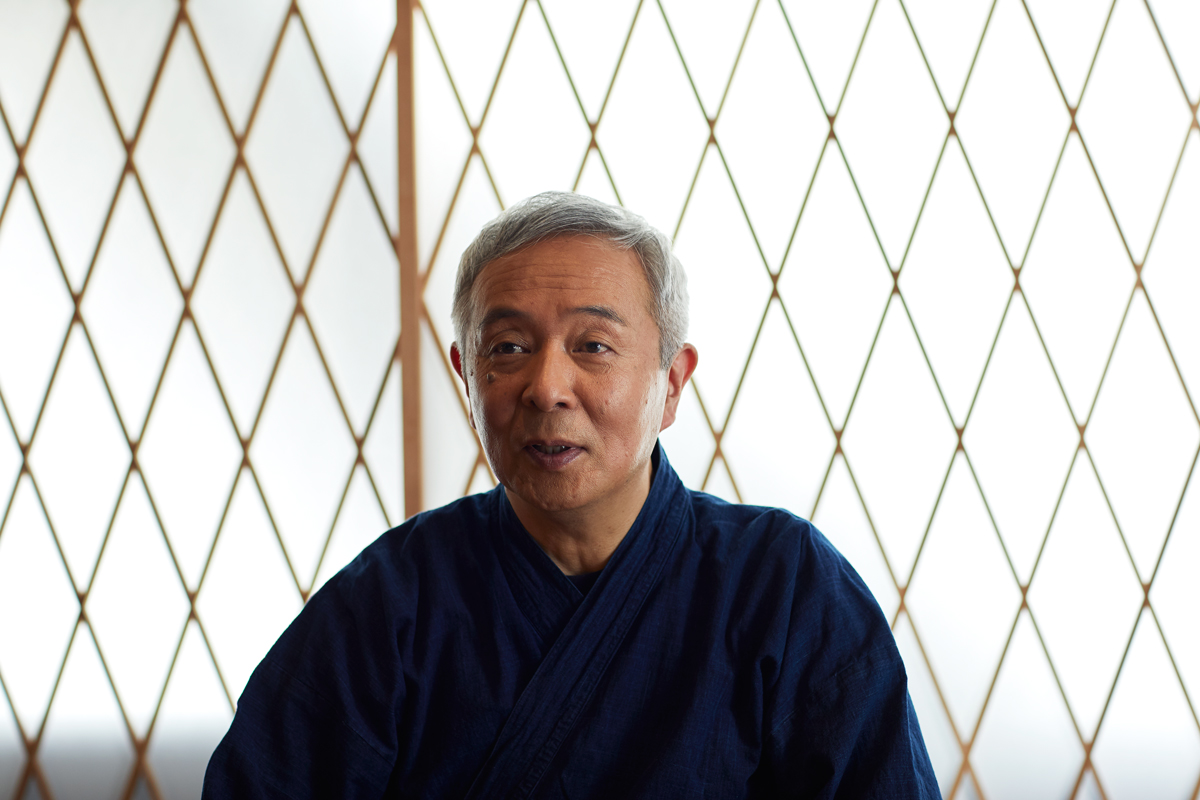
“This is extremely difficult, and I struggled a lot. Kuro-urushi will break easily if polished by hand even just a little. When applying multiple layers, I polished the little protuberances that appeared after the lacquer dried with charcoal to remove them, but if I applied a too much strength when polishing, the design would instantly deform. I tried numerous methods for polishing, failing numerous times, but eventually discovered the most appropriate way. For Suki-urushi, there will be discoloration if there are irregularities in the coats of lacquer. Therefore, during production, I had to be extremely careful when applying and polishing the lacquer to make sure there were no such irregularities.”
The process to complete the Grand Seiko Urushi dials
The painting process starts by applying a single layer of raw lacquer onto the dial after abrading its metallic surface to increase adhesiveness between lacquer and metal.
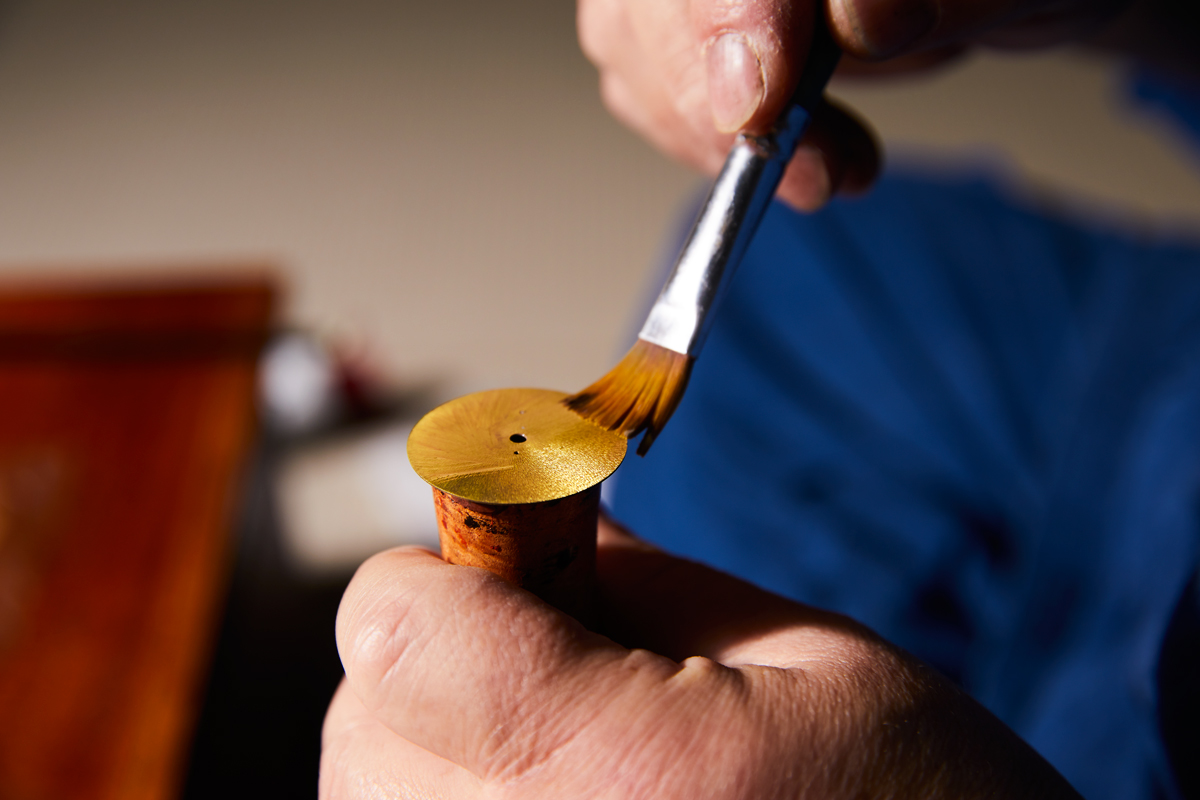
Then, for the Suki-urushi dial model decorated with the Mt. Iwate pattern, the whole surface is sprinkled with gold powder before the raw lacquer has hardened.
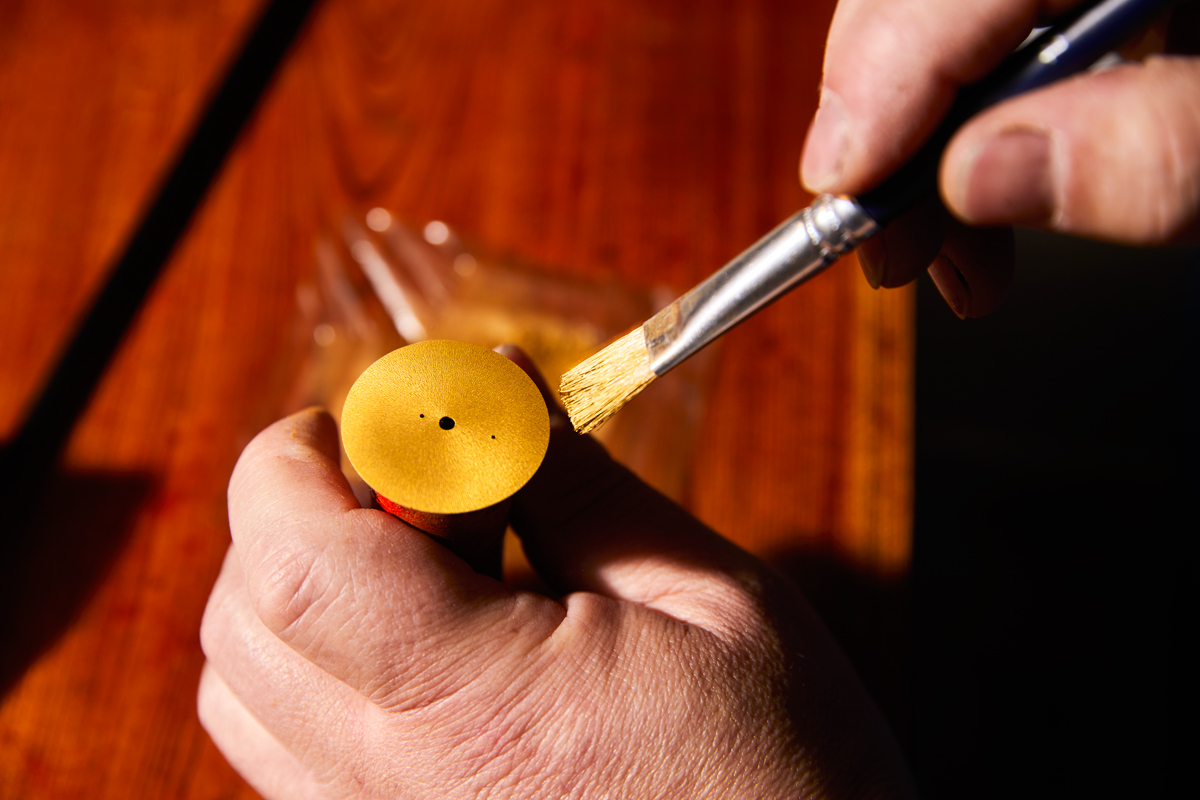
Afterward, for both the Suki-urushi and the Kuro-urushi models, the lacquer is filtered and strained using Yoshino handmade Japanese paper to remove dust and small impurities.

"The Urushi will become more refined the more you filter and strain it, but usually it is done once, at most twice. For these Urushi dial models, since even the slightest impurity would be unacceptable, I filter and strain the Urushi three times through four layers of Yoshino handmade paper, using only the lacquer dripping onto the last layer. I apply Suki-urushi or Kuro-urushi on the dial, depending on the model, after which it will harden through the catalysis of the laccase enzymes present in the lacquer.
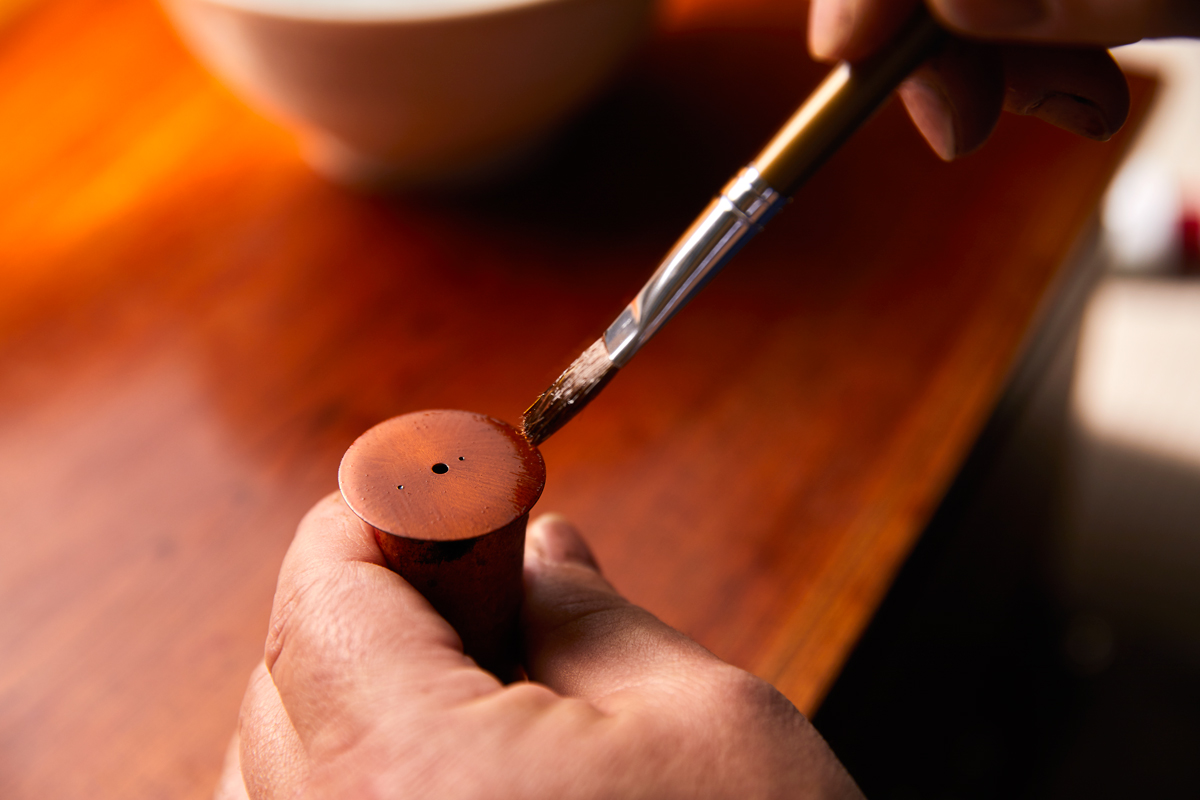
I then polish it roughly with charcoal, and a fine-mesh cloth and abrasive, a cycle I repeat three times.
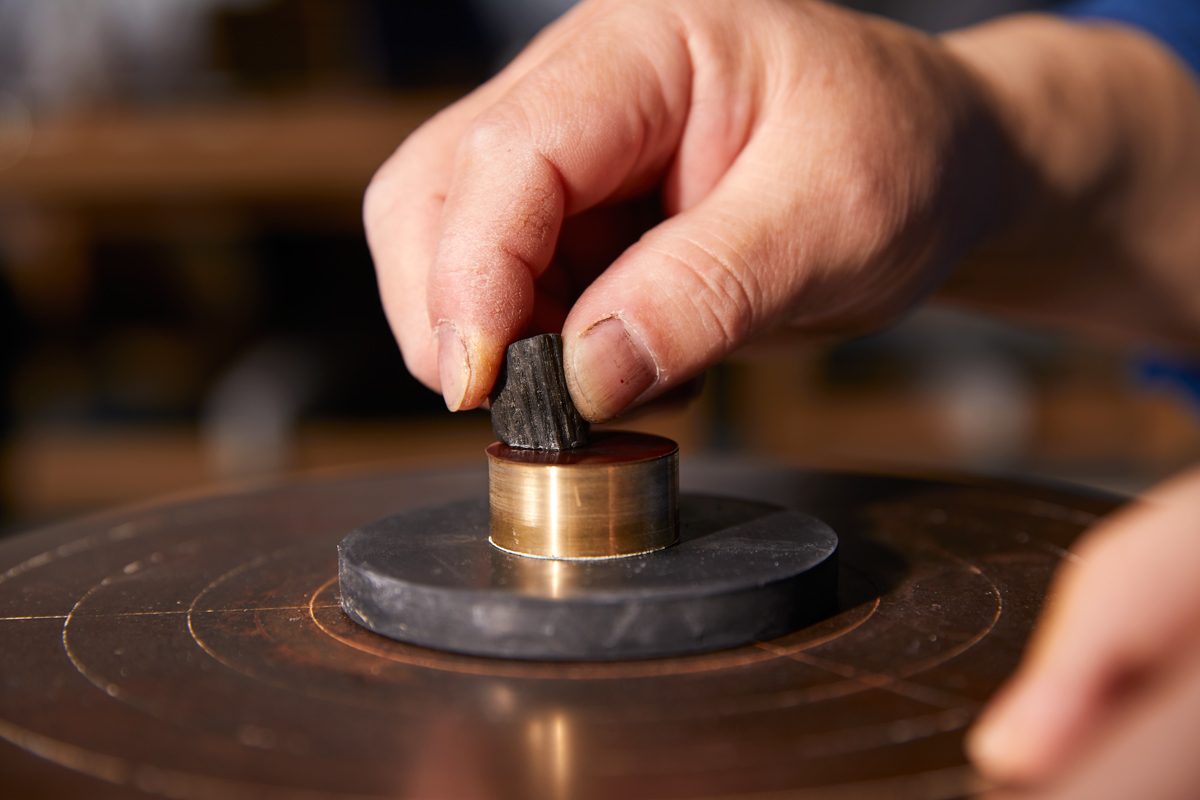
If applied too thickly in one go, the lacquer would not only drip, it would also warp the dial after drying. That is why Mr. Tamura has to apply three thin coats of lacquer.
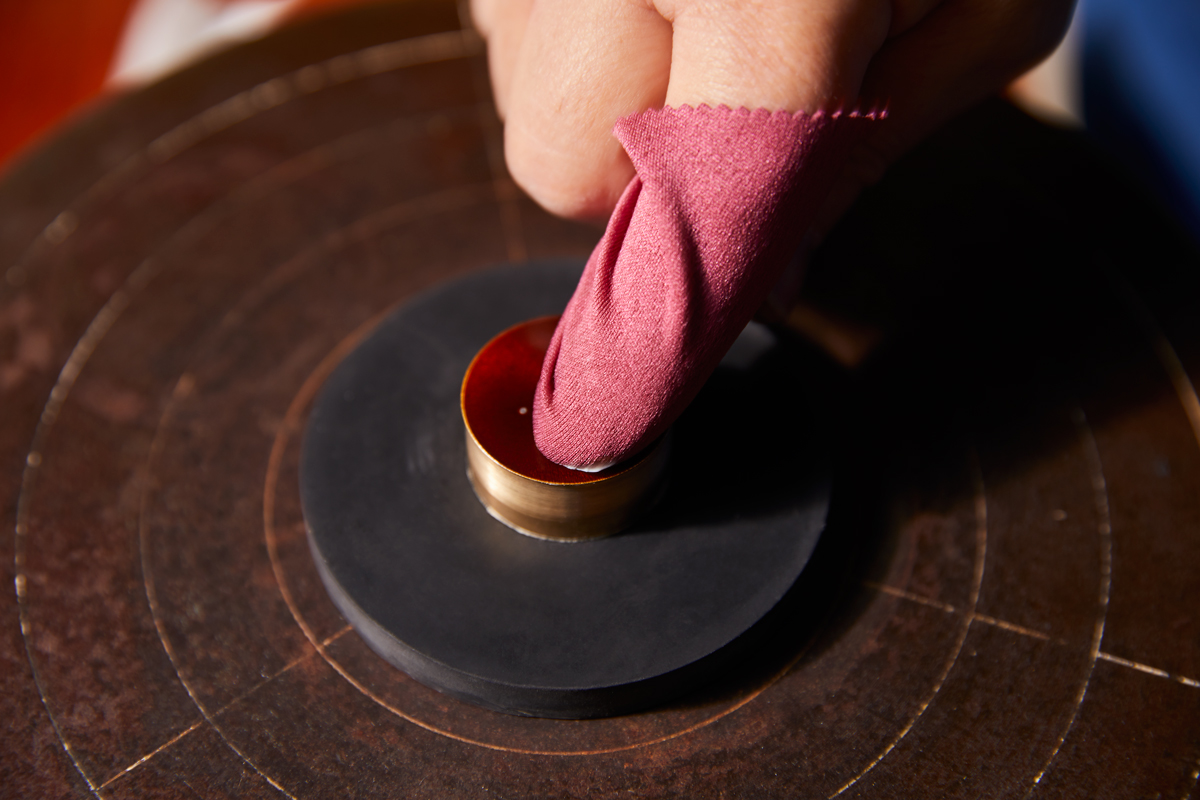
After the top coat has dried, he polishes it with finer charcoal, cloth and abrasive to give it a refined and shiny luster like a mirror surface though a polishing method known as “roiro shiage.”
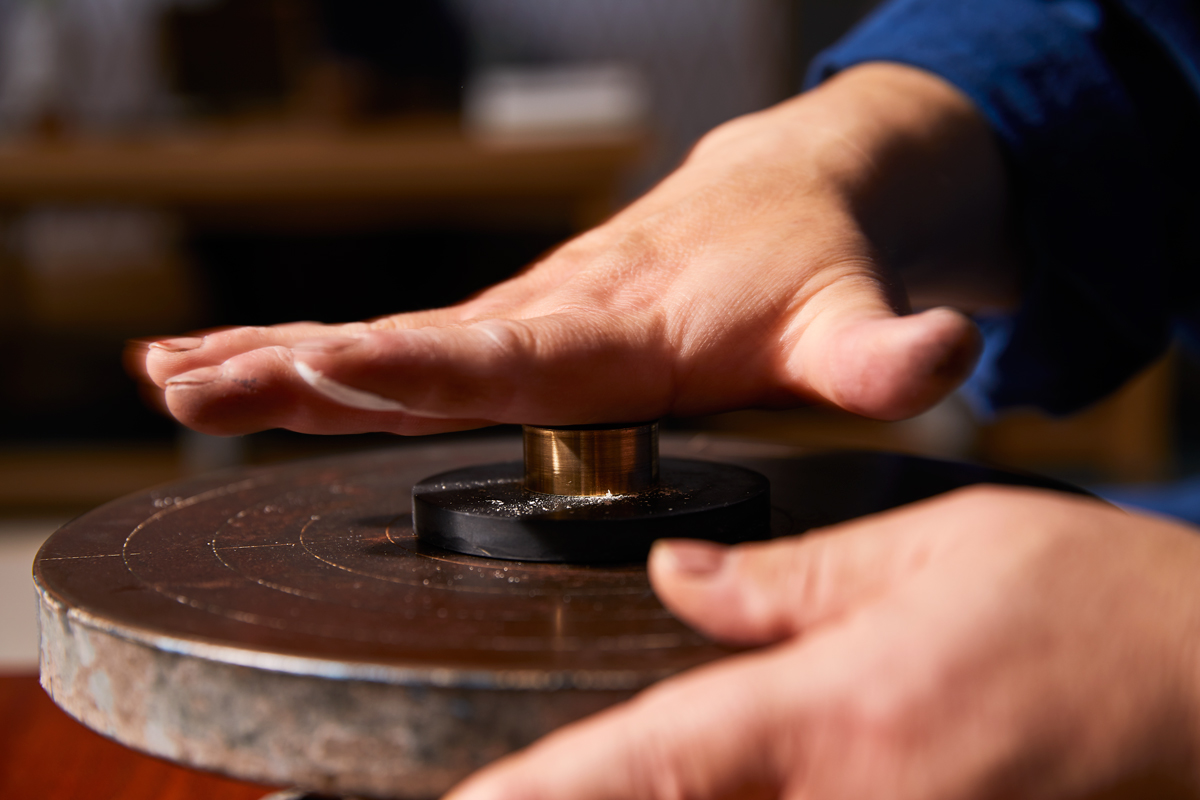
In Part 3, we conclude the interview with master craftsman Mr. Tamura, who discusses the hidden episodes of his production process, including not only details of the taka maki-e technique he used for the Urushi dial models, and also some episodes that would usually never be disclosed.
Isshu Tamura
Born in 1957. Currently residing in Kanazawa City, Ishikawa Prefecture. Isshu Tamura trained in the traditional Kaga maki-e lacquer craft technique of Kanazawa under master craftsman Ikkō Kiyose. After learning these skills, Mr. Tamura set out to develop an unparalleled and original technique. He is Japan’s leading artisan of maki-e and Urushi lacquer. He has applied his extremely elaborate techniques of Kaga maki-e not only to lacquerware, but also to the creation of luxury fountain pens and wristwatches, which have received worldwide acclaim for their traditional beauty and one-of-a-kind elegance. The "GS" brand logo and hour markers of the 2019 Grand Seiko Elegance Collection Urushi dial models were handcrafted by Mr. Tamura who combined his original fine technique with a technique known as taka maki-e (or raised maki-e).
